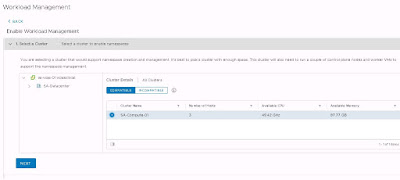Step 1: Install Docker in a linux vm or physical machine. Ubuntu will be used in this demo.
# sudo apt-get install docker.io
Step 2: Start and enable docker
# sudo systemctl start docker
# sudo systemctl enable docker
Step 3: Verify the version of docker
# sudo docker -v
Docker version
19.03.8, build afacb8b7f0
Step 4: Learn about subcommands on your own
# sudo docker
Usage: docker [OPTIONS] COMMAND
A self-sufficient
runtime for containers
Options:
--config string Location of client config files (default
"/home/javier/.docker")
-c, --context string Name of the context to use to connect to
the
daemon (overrides
DOCKER_HOST env var and
default context set
with "docker context use")
-D, --debug Enable debug mode
-H, --host list Daemon socket(s) to connect to
-l, --log-level string Set the logging level
("debug"|"info"|"warn"|"error"|"fatal")
(default
"info")
--tls Use TLS; implied by --tlsverify
--tlscacert string Trust certs signed only by this CA (default
"/home/javier/.docker/ca.pem")
--tlscert string Path to TLS certificate file (default
"/home/javier/.docker/cert.pem")
--tlskey string Path to TLS key file (default
"/home/javier/.docker/key.pem")
--tlsverify Use TLS and verify the remote
-v, --version Print version information and quit
Management Commands:
builder
Manage builds
config
Manage Docker configs
container
Manage containers
context
Manage contexts
engine
Manage the docker engine
image
Manage images
network
Manage networks
node
Manage Swarm nodes
plugin
Manage plugins
secret
Manage Docker secrets
service
Manage services
stack
Manage Docker stacks
swarm
Manage Swarm
system
Manage Docker
trust
Manage trust on Docker images
volume
Manage volumes
Commands:
attach
Attach local standard input, output, and error streams to a running
container
build
Build an image from a Dockerfile
commit
Create a new image from a container's changes
cp
Copy files/folders between a container and the local filesystem
create
Create a new container
deploy
Deploy a new stack or update an existing stack
diff
Inspect changes to files or directories on a container's filesystem
events
Get real time events from the server
exec
Run a command in a running container
Step 5: Test docker by running "hello world"
# sudo docker run hello-world
Hello from Docker!
This message shows
that your installation appears to be working correctly.
To generate this
message, Docker took the following steps:
1. The Docker client contacted the Docker
daemon.
2. The Docker daemon pulled the
"hello-world" image from the Docker Hub.
(amd64)
3. The Docker daemon created a new container from
that image which runs the
executable that produces the output you are
currently reading.
4. The Docker daemon streamed that output to
the Docker client, which sent it
to your terminal.
To try something
more ambitious, you can run an Ubuntu container with:
For more examples and ideas, visit:
https://docs.docker.com/get-started/
Step 6: Download an image
# sudo docker pull postgres
Step 7: Verify the number of images that were pulled
# sudo docker images
REPOSITORY TAG IMAGE ID CREATED SIZE
postgres latest 0f10374e5170 2 weeks ago 314MB
hello-world latest bf756fb1ae65 4 months ago 13.3kB
Step 8: Start an access a container
# sudo docker run postgres
# sudo docker ps -a
# sudo docker run -it postgres bash
Other Commands to know:
# sudo docker stop container_id (graceful shutdown)
# sudo docker kill container_id (non graceful shutdown)
# sudo docker rm container_id (delete a stopped container)
# sudo docker build . (build your own container)




















































